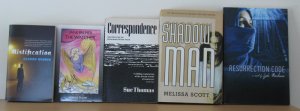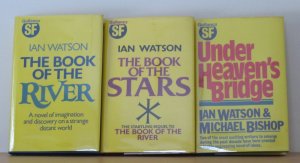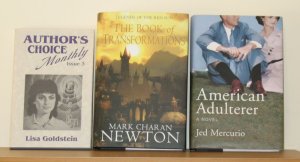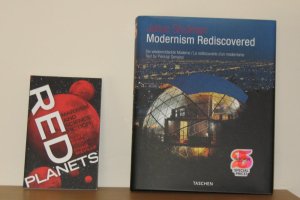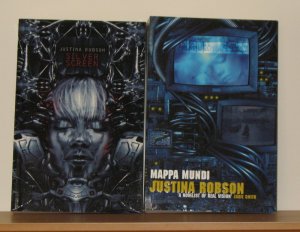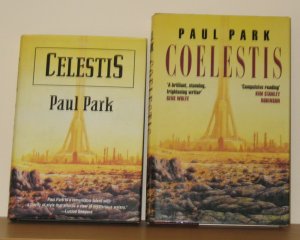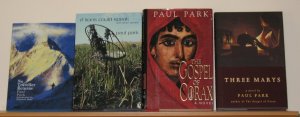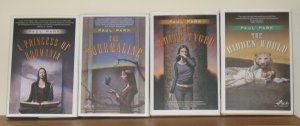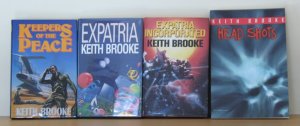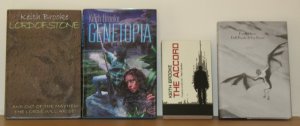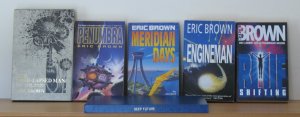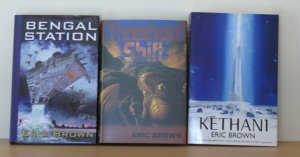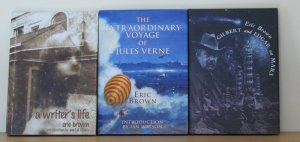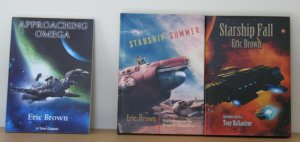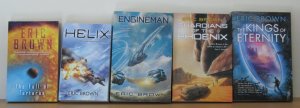When Kameron Hurley’s God’s War was published earlier this year, I took note of it, as I generally do of sf novels which feature Arabs or Arab-inspired backgrounds. I checked out the book’s website, and even read the first chapter, which was posted online. But I didn’t see anything there that made me want to buy and read the book immediately. At some point, yes, I’d probably pick up a copy, but nothing I saw encouraged me to do so there and then.
A few weeks later, Niall Harrison tweeted that God’s War was one of the best books published this year he’d read so far. He described it as “Gwyneth Jones meets Richard Morgan” – or words to that effect. And so, after a bit more conversation on Twitter, a group of people all bought copies at his urging. I was one of them.
I have now read God’s War.

Nyxnissa is a “bel dame” on the world of Umayma, which means she is a government assassin charged with killing deserters from the army. Because Nasheen has been at war with neighbouring state Chenja for generations – so long, in fact, that no one is really sure what they are fighting over. All Nasheenian men must fight at the front, and many women also volunteer. The end result of this is a female-dominated society at home, much like Britain during World War II.
But Nasheen is also an Islamic state – or rather, its state religion is one which appears to be descended from Islam. The Nasheenians have mosques and a holy book called the Kitab (which is Arabic for “book”; and, in Islam, members of the Abrahamic religions are known as “People of the Book”). There are further clues in the names of people and places – although a reference to the Kitab being written in a “the ancient language of prayer” (p 91) suggests that the Nasheenian language is not true Arabic. This may explain why some of the female characters have male names, such as Bashir, Husayn or Zubair. Or indeed why some of the place-names don’t entirely convince as Arabic – Chenja, for example: Arabic has no “ch” phoneme. And also Ras Tieg, another nation on Umayma: Arabic has a “j”, though it is pronounced as “g” in Egypt. (None of the nations’ name are entirely parsable either – ﻧﺶﺀ (nash) means “youth”, and -een could be the dual ending; Ras Tieg – ﺭﺍﺱ (ras) is “head” or “headland” but I can’t find anything close to “tieg”. But perhaps the names are not intended to mean anything.)
As muslims, the Nasheenians are moderates – possibly unsurprising, given that the society is matriarchal. Many of the teachings seem to be ignored, if not flouted – such as those prohibiting the consumption alcohol (Nyx drinks a lot of whisky during the story). Chenja, however, is far more orthodox. It practices polygamy, and its women wear the veil. One of the other characters, Rhys, is Chenjan, and while Nyx may be lapsed he certainly is not. He speaks a translation of bismillah ar-rahman ar-raheem (p 91), and also recites the ninety-nine names of God (p 80). Nyx further mocks him for “pounding [his] head on the pavement six times a day” (p 78). It is also implied that the Chenjans venerate saints, suggesting perhaps they are Shi’ites to the Nasheenian Sunni muslims. Though, according to Rhys, this cannot be the case as the two nations comprise “… believers from different moons, united in their belief of God and the Prophet and the promise of Umayma. For a thousand years, they had carved out some kind of tentative peace, maneuvered around a hundred holy wars … Chenjans would submit only to God, not his Prophet, let alone any monarch who wanted to sever God and government.” (p 78)
There are other nations on Umayma. The Mhorians, for example, are racially different to the Nasheenians, and are descended from refugees who were given permission to settle on the world hundreds of years earlier. Clues in the text – a reference to Saint Mhari, for example – suggest they may be Christian.
Hurley does an excellent job with her society-building, painting a picture of two nations with different approaches to a shared religion. The way she integrates the religion and its practice into the daily lives of the characters certainly resembles Islam in a way that Christianity does not. It is not, happily, just the mention of mullahs, burqas or the other trappings of Islam or the Arabic world. Having said that, the easy prevalence of acts and attitudes considered haram does render the end result a little less convincing.
Then there’s the technology in God’s War, which is almost entirely insect-based. Vehicles, called bakkies, are powered by a fuel generated by a sealed hive of cockroaches. People called magicians have some sort of unexplainable power over these insects – pheromonal, perhaps? – which allows them to control them. They even use them as, er, bugs – i.e., surveillance devices. Magicians are masters of biotechnology (I think they are all male), and so of advanced medicine too. Not everyone returns from the front in one piece – but the magicians patch them up, often using body parts from those who didn’t make it. Umayma’s sun is also stronger than ours – or the world’s atmosphere is thinner – and skin cancers are prevalent. Biological and chemical weaponry is used extensively in the war between Chenja and Nasheen, which in turn has its effect on the world’s population.
But perhaps the strangest element of God’s War‘s world, and the least convincing to me, is the presence of “shifters”. These are people who can “shift” into other forms – an animal, and each person is, I think, limited to one other form. One character can transform into a dog, another into a dove, and yet another into a raven. How? Where does all that mass go? There’s a hand-wavey mention of “quantum effects”, and it is stated that shifters didn’t start to appear until the various peoples had colonised Umaymi… But. It just feels a bit unnecessary, a bit over-the-top.
Likewise the magicians’ gyms. For reasons not entirely clear, the magicians are fans of boxing. The sport may be a signifier for emancipation in God’s War, given that it is acceptable in Nasheen but underground in Chenja, and popular in both. The gyms are all interconnected, irrespective of the distance between them – as if the magicians had a secret, and instantaneous, travel network. I couldn’t quite work out the reason for this – it only seemed to impact the story peripherally.
The plot of God’s War is complex but also relatively straightforward. Nyx does something she shouldn’t have done, is booted out of the Sisterhood of bel dames and sentenced to prison. When she is released seven years later, she becomes a licenced bounty hunter. She hires a team – magician Rhys (who is a Chenjan deserter), Mhorian shifter Khos, gun-nut Anneke and comms expert Taite. When Queen Zainab hires Nyx and her team to recover an offworlder, Nikodem, who has gone missing, things get complicated very fast. The Sisterhood don’t want her to succeed. She tracks Nikodem to Chenja, which means infiltrating an enemy country. Meanwhile, Nyx’s sister, a biotech scientist, is murdered, and her work somehow seems linked to Nikodem’s disappearance…
God’s War is a brutal book. Nyx is a brutal protagonist. A lot of people are killed or maimed in the story. A lot of people who have been maimed appear in the story. The magicians’ medicine is sufficiently advanced that even the most severe injuries are survivable, although why this should result in such a low value being put on life is beyond me. There is a lot of violence, and it is graphically described. Umayma is dirty, primitive in many respects, and populated by physically and psychologically broken people. God’s War is a bleak novel, with a cast that are not far from being monsters. I think it was this, more than anything else, that made it hard for me to love God’s War. The world-building is superb, Nyx is a well-drawn protagonist, and the plot is pleasingly complex, but I still found it a little too bloodthirsty for my tastes.
I couldn’t quite see the Gwyneth Jones in God’s War, although there are some small similarities with Richard Morgan’s Black Man. I don’t think it’s the best book I’ve read so far this year, though it may prove to be the best book published in 2011 I read this year. I would not be unhappy if it appeared on a few shortlists next year. I will certainly be buying the sequel, Infidel, due to be published in October.
EDIT: I forgot to mention the mention of Deep Blue Something – is Hurley a fan of the group, perhaps? “Nyx pulled her burnous up and followed the dimly lit signs to room tres-bleu-chose.” (p 224)

